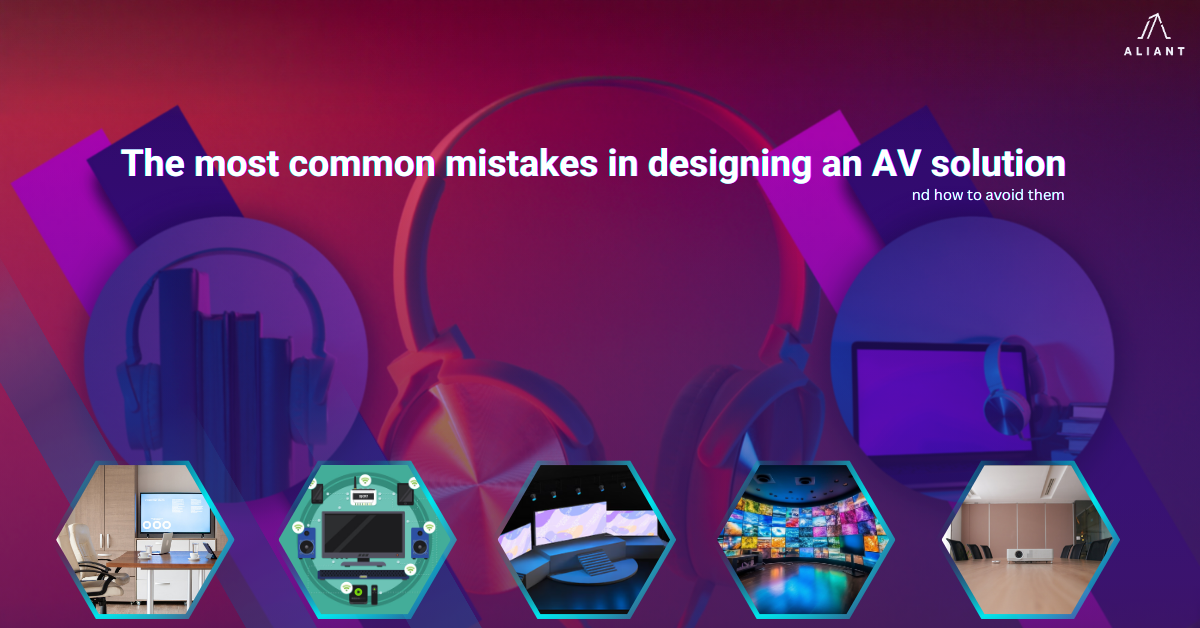The most common mistakes in designing an AV solution and how to avoid them:
Designing an Audio-Video (AV) solution is a complex process, which involves much more than simply choosing high-performance equipment. A successful AV solution must take into account the context in which it will be installed, the existing infrastructure, but especially the real needs of the end users. Unfortunately, in practice, a series of mistakes are repeated that can compromise the quality of the implementation, generate additional costs and affect the customer experience.
Below we will analyze five of the most common errors encountered in the bidding and design phase, as well as how they can be prevented.
1. Lack of a site survey before bidding
One of the biggest mistakes is making a bid based solely on photos, sketches or brief descriptions, without a physical visit to the site. Very often, the reality on the ground differs considerably from what is transmitted by the client:
• the actual dimensions of the space may not correspond;
• the structure of the walls and ceiling influences the assembly;
• there may be obstacles, fixed furniture or wiring constraints that do not appear in the plans;
• the electrical or network infrastructure does not comply with the technical requirements.
A site survey allows the identification of these differences and the adjustment of the solution before bidding. This avoids unpleasant surprises during implementation and additional costs for the client. In addition, the presence on the ground conveys professionalism and provides trust to the client.
2. Underestimating the accessories and cables needed
Often, the focus is on the main equipment – video projectors, displays, cameras, sound processors – but it is the accessories and cables that make the system integration possible. The lack of a correct estimate can lead to:
• delays in delivery and installation (because they have to be ordered later);
• additional costs that were not anticipated in the client’s budget;
• improvisations that affect the reliability and final appearance of the room.
A well-thought-out AV project includes all the details from the beginning: mounting brackets, racks, adapters, patch panels, cables of the correct length and quality, fastening elements and cable masking. These “small” details make the difference between a functional solution and one with problems.
3. Not understanding the client’s real need
Another common mistake is treating the request for quotation as a list of equipment to be checked off, without understanding what the client actually wants.
For example:
• the client asks for a large display, but their real objective is efficient collaboration, where an interactive system can be more useful;
• requests a simple audio system, but in reality they need a scalable solution for hybrid conferences;
• only mentions a video projector, but they did not think about the acoustics of the room or the brightness of the environment.
An open discussion, with clear questions and examples, helps to discover the real needs and propose a solution that brings added value. Without this stage, the project risks not meeting the expectations of the end user, even if “on paper” it corresponds to the request
4. Offers limited to the initial request, without recommending updated solutions
AV technology is evolving rapidly. A common mistake is for the integrator to offer exactly what the customer requests, without suggesting newer or more suitable alternatives.
For example:
• the customer requests an older model of video camera, but there is already a new version on the market, with advanced features and similar costs;
• requests a classic projector, but in reality an LED display could be more reliable and more economical in the long run.
The role of the AV specialist is not just to deliver equipment, but to be a consultant. Informed recommendations can make the difference between a “good” solution and one optimized for the future, increasing customer satisfaction and strengthening the long-term relationship.
5. Offering solutions that don’t fit into the existing ecosystem
In many cases, customers already have a partially implemented system: audio equipment, online collaboration platforms, control or IT management networks. If the new solution doesn’t integrate with what already exists, the result is a fragmented and difficult-to-use system.
Problems can include:
• lack of interoperability between equipment;
• need to use multiple remote controls or separate applications;
• maintenance and scalability difficulties;
• end-user experience becomes complicated and frustrating.
Proper design takes into account the existing ecosystem and ensures that the proposed solution integrates naturally into the customer’s workflow. Sometimes this involves proposing open standards, solutions compatible with common platforms, or equipment with upgradable software.
The success of an AV project depends not only on the equipment chosen, but also on the analysis, planning and consulting process behind them. Mistakes such as the lack of a site visit, underestimating accessories, misunderstanding the client's needs, lack of proactive recommendations or ignoring integration with existing systems can turn a promising project into a costly and frustrating experience.
A professional integrator is not limited to responding to the initial request, but becomes a trusted partner, capable of delivering efficient, scalable and future-proof AV solutions.
✅ Aliant offers you free consulting for AV solutions – from the simplest to the most complex – to deliver a turnkey solution to the highest standards.
👉 Please consult the link below to benefit from free consulting: Aliant AV Solution




Comments